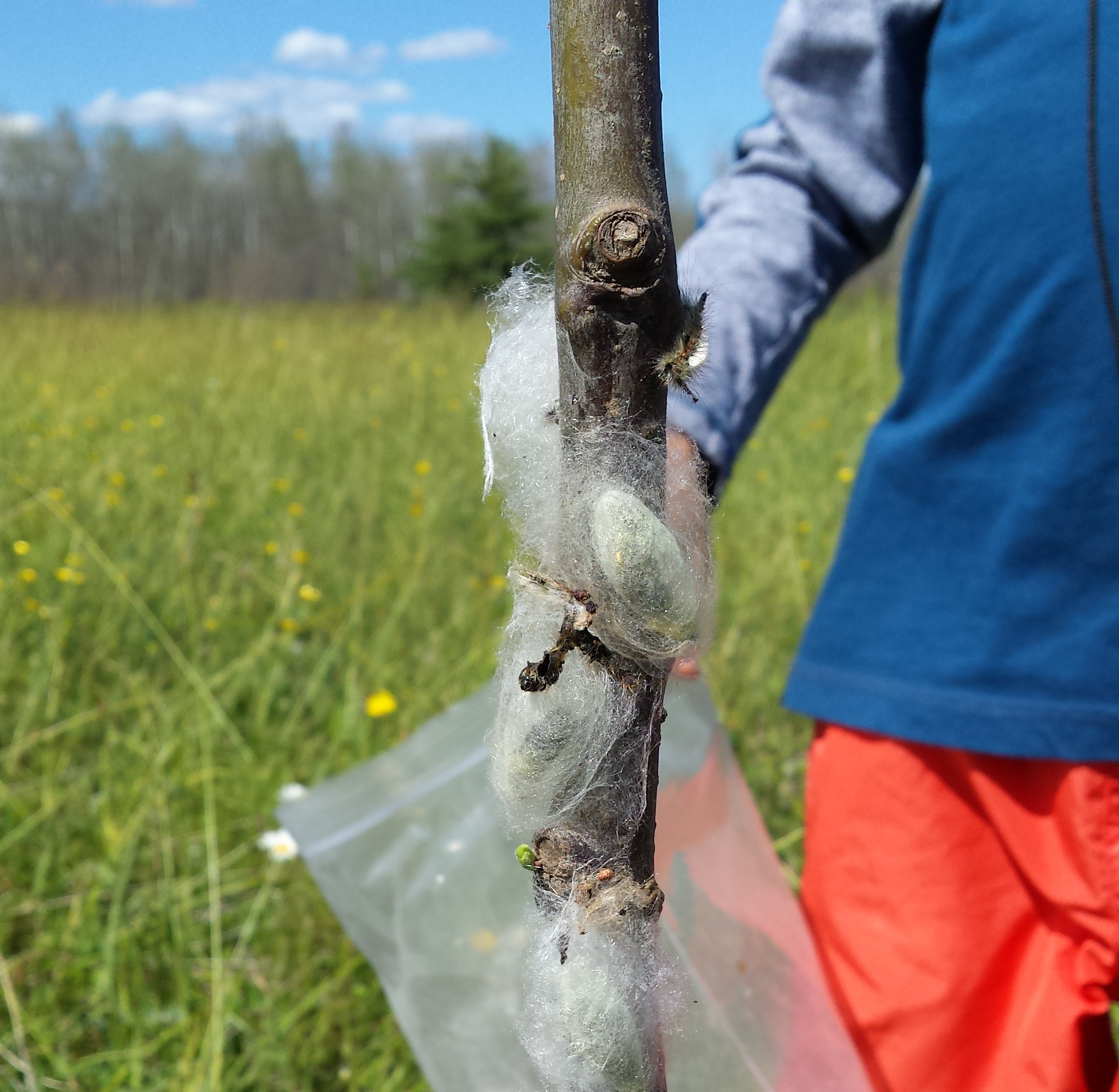It is the dreadful season for tent caterpillars, but is there anything positive about them?
If you live in the countryside, you may notice that ruffed grouse are flourishing. If you live in an urban or suburban setting, I have some more entertaining ways of saving your tree’s and shrub’s foliage.
In the countryside
Just when the leaves appear on your trees, after a long winter, tent caterpillars have the ability to quickly defoliate every single tree. You may not see any tree leaves on trees for kilometres on end. It is quite a phenomenon because these caterpillars have the ability to remove greenery to such an extent that it makes summer look like spring.
Second Crop of Buds…for Grouse
The good news is that trees are resilient to this attack. Unless the trees are unhealthy, they will produce new leaves in the summer. This means trees will also produce a second crop of buds - a preferred food for grouse. Great news for those involved in the conservation of ruffed grouse!
Have you ever heard what sounds like helicopters in the middle of a forest in spring? If you didn’t see any helicopters, you may very well have heard ruffed grouse.
Males have a unique courtship display where they find a downed tree, perch on it, and start beating their wings while on top of it, to attract females. Their wings beat so fast they break the sound barrier, making shockwaves - sound booms. The tree trunks they sit on reverberates in response to each wing beats, echoing through the forest.
What does this have to do with tent caterpillars?
Healthy trees survive defoliation.
For mature trees already in decline, the defoliation hastens their fall. Ruffed grouse require tree trunks for their reproduction.
For young vigorous trees, the defoliation stalls their growth. That ensures that the tree’s buds stay within reach of young ruffed grouse.
I wouldn’t be surprised if the young ruffed grouse also eat the caterpillars. Quaking aspen by the way, is the favoured food of both ruffed grouse and forest tent caterpillars.
As shocking as the damage may be, turning summer back to spring, of the ravages of tent caterpillars, prepare for an equally impressive auditory spectacle from ruffed grouse!
Take out the toy water guns and watch em fly!
Back into suburbia and the city, you have several options for dealing with tent caterpillars.
One is pesticides - which I could do for you if you live in the Toronto area.
Another is the biological pesticide - Bacillus thuringiensis - spores of a bacteria readily available at garden centers. The idea is to spray the leaves of the tree. When the caterpillar takes a bite of the treated leaf, it stops feeding and dies later. If it rains, the BT gets washed off, so you will have to reapply. Follow the label instructions.
There are also a few options for physical removal. When the eggs hatch, these form a wriggly, wormy, soft and mushy mass of caterpillars at the same spot on the tree. This is when you want to get them - before they spread. Wearing gloves, you can easily remove and dispose of them.
If that doesn’t appeal to you, and I don’t blame you, you can use a hands-off approach by just hosing them down. Repeat as necessary if they climb back. If you don’t have access to a hose, or it isn’t long enough, you can use a portable pressure washer. Careful not to damage the bark - the stream of water could be strong enough to cause serious damage. Spraying from a further distance should prevent harm. Test the pressure on a small twig, and make adjustments to your distance. You just want to fling the caterpillars off the tree, so you might not even need to touch the tree with the water if you aim at the sides of their body.
Some toy water guns have pumpable air compartments to pressurize the water stream. If you could get close enough to the worms, without climbing the tree, that might also work. If it doesn’t, add a drop of dish cleaning soap and that should help to dislodge them.

Cocoons of Forest Tent Caterpillars; 2016, Sébastien
You can also buy tree wraps, or tape, to prevent them from climbing back up. There are some instructions online to make your own tree wraps with readily available materials. That will prevent the caterpillars from climbing back onto the tree. Be aware that it won’t prevent butterflies or moths from laying more caterpillar eggs on the tree.
These caterpillars will also eat some weeds and I don’t think they eat grasses. It could be that they do eat grasses, but that the grasses grow new blades as the caterpillars moved on. I could tell you that timothy, bird’s foot trefoil, clovers and vetch survived - but that during an off-season for tent caterpillars, one field I am familiar with was significantly more dense with vegetation.
That’s it for now. I hope you enjoyed this post and that I provided you with some fresh information regarding tent caterpillars. Please share this post with friends and family. If you enjoyed this post, please also share, like, follow me on Twitter at @PUnhabitat, on Instagram @pestunhabitat, on Snapchat @pest_unhabitat, on LinkedIn and on Pinterest
I would also greatly appreciate your support if you could gave me a 5 start rating on both Facebook @PestUnHABITAT and on the google business page Pest UnHABITAT . This is a new business and I could use the boost your support could provide.
Thank you for reading this post. Please help support Pest Unhabitat. Contact us at 647 394-4743 or by email seb@pestunhabitat.com